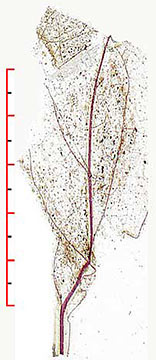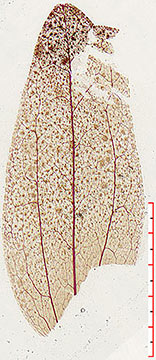I am grateful to Professor Jim Mauseth for guiding me through the process of clearing and staining the Evolvulus leaves for this project. Without his patience and help it couldn't have happened.

|

|

|

|
E. alsinoides | E. nuttallianus | E. sericeus | E. discolor |
|---|
The leaves are small and thin and step 1, treating with NaOH, digests most issue making them very fragile. During steps 2—6 the capsules had to be gently agitated. Several leaves suffered minor fractures during these steps.


|

|
E. alsinoides | E. discolor (previously as E. nuttallianus) |
|---|
Permount has a high degree of viscosity, and the mounting step 7, removing the leaves from the capsules, was difficult — in large part because the capsules I had chosen narrowed to a neck and the leaves tended to hang at this point and had to be prodded out so that I could move them onto slides. One leaf was totally destroyed, 2 leaves folded over, several broke into pieces. E. alsinoides leaves suffered the most damage, and indication that they were the most fragile. E. nuttallianus fared better than the others. In all, only a third survived intact or with only minor damage — but in spite of this the partials that remained provided clear evidence as to the nature of the venation of that leaf.